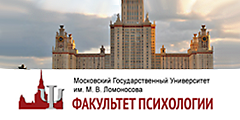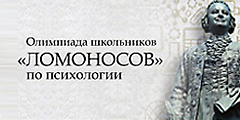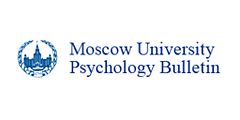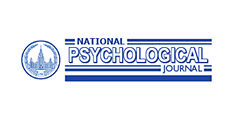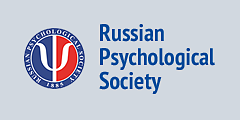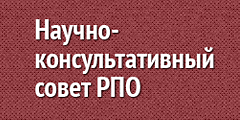Instructions for Authors
“Psychology in Russia: State of The Art” seeks contributions that provide original theoretical and empirical research on the most topical issues in Russian and world psychology.
“Psychology in Russia: State of The Art” is published quarterly; both print and online (open access).
To submit the paper for publication in “Psychology in Russia: State of the art”, read the following instructions and fill in the items of the; Registration & Manuscript submission.
|
Russian-speaking authors |
English-speaking authors |
|
Signed conflict-of-interest statement both in Russian (konflikt_interesov_ru.rtf) and in English (conflict-of-interest_en.rtf ). Russian version of the whole article (optional). |
Signed conflict-of-interest statement in English (conflict-of-interest_en.rtf ). |
Technical issues
- The papers are accepted in MS Word only (.doc / .docx / .rtf). Signed statements are accepted in .pdf or graphic formats (.gif, .jpeg).
- Choose one of the authors who will handle correspondence at all stages of refereeing and publication, also post-publication. Make sure that the contacts are valid.
Preparation of the manuscript
Contributions should follow the Publication Manual of the American Psychological Association, Seventh Edition. Here is the Template.
Text structure. The paper contains the following parts: abstract (230+ words), keywords (5-7 words), main text (3000-5000 words) and references.
Abstract.The abstract should describe briefly the purpose of the research, the principal results and major conclusions. An abstract is often presented separately from the article, so it must be able to stand alone.
An abstract should:
- Have the length of 230-250 words
- Include the following sections: Background / Objective / Design / Results / Conclusion
For examples refer to Elsevier articles: http://www.sciencedirect.com/science/article/pii/S0195666314005157
Main text should include the following sections: 1) Introduction (literature review), 2) Methods (goals and tasks of research, research design and procedure, description of the sample and the methods used), 3) Results (description of results, including tables, figures etc), 4) Discussion (discussion of results), 5) Conclusion (summary of results, suggestions for future research) and 6) Limitations (possible issues in generalization of results, e.g. sample size, limited access to data etc).
Tables. Make sure that the tables are numbered according to their sequence in the text. Place footnotes to tables below the table body and indicate them with superscript lowercase letters. Try to avoid using tables with plenty of numerical data. Make sure that all the tables and illustrations are discussed in the text.
Figures. Use uniform lettering and sizing of your original artwork. Resolution should be minimum 300 dpi. Only .eps format is accepted. Note that the journal is printed in black and white. Make sure that the illustrations are numbered according to their sequence in the text. The names of the files should have the subscription the way it would appear in the text. For example: 1_coping_with_job_stress_model.eps
Acknowledgements should be placed in a separate section at the end of the article before the references. Conflicts of interests, if any, should be disclosed.
References are formatted according to the APA (7th ed.) standards.
Transliteration should be formatted using Library of Congress transliteration system (ALA-LC). Try to avoid spaces between initials. Please, add DOI to each reference (if any), using this format: https://doi.org/ ….
For references’ formatting we recommend you to use special service (www.mendeley.com, www.citethisforme.com, www.endnote.com)
A references list should include:
- Not less than 30 items – for research or theoretical articles
- Not less than 60 items – for systemic review
- Not less than 30% of the references should be published within 5 years from the current moment
- Not less than 40% of the references should be publications from international sources
Excessive authors’ self-citation is also considered as a mal-practice. Please, limit citation of your own work to 15%.
Here is the example of references by type:
|
In a reference list |
In-text citation |
|
Books with one author Franz J. (1973). Neuropsychology in modern science. London, Penguin Books |
Franz (1973) compares….. |
|
Russian sources Mikadze Yu.V. (2008). Nejropsyhologia detskogo vozrasta [Developmental neuropsychology]. Moscow: Piter. |
Mikadze (2008) |
|
Books with several authors Krause, K.-L., Bochner, S., & Duchesne, S. (2006).Educational psychology for learning and teaching (2nd ed.). South Melbourne, Vic., Australia: Thomson. N.B. When a work has three, four or five authors, cite all authors the first time, and in subsequent citations include only the first author followed by et al. |
(Krause, Bochner, & Duchesne, 2006) then (Krause et al., 2006) |
|
Book chapter in edited book Helber, L. E. (1995). Emotional development. In M. V. Conlin & T. Baum (Eds.), Early Childhood: educational approaches (pp. 105-113). Chichester, England: John Wiley. |
(Helber, 1995) |
|
Journal article Koen F. (2012). The problem of moral development in early childhood. Developmental psychology, 6, 45-56. |
Koen F. (2012) |
|
Journal article (internet only – no printed version) Snell, D., & Hodgetts, D. (2012). Psychology of intergroup communication. Social Psychology, 1. Retrieved from http://www.sociopsy.ac.nz/wfass/tkka |
Snell, D., & Hodgetts, D. (2012) |
|
Conference paper online Bochner, S. (1996, November). Mentoring in higher education: Issues to be addressed in developing a mentoring program. Paper presented at the Australian Association for Research in Education Conference, Singapore. Retrieved from http://www.aare.edu.au/96pap/bochs96018.txt |
Bochner (1996) |
Editing policy
Dear authors,
We need to inform you about new procedures we are enacting in respect to your manuscripts.
Since our journal was included in the Emerging Sources Citation Index-Web of Science in 2016, the requirements for manuscript editing have become more rigorous. To meet the requirements assuring a quality translation, the final version of your manuscript (as approved by the editorial board after implementation of all the necessary amendments in response to reviewers’ comments) is to be edited by a professional editor who is a native English speaker.
An article may be edited either in American or in British English, but uniformity of editing style is mandatory.
Basing on our editorial experience, we consider the following editors to be completely reliable:
- Susan Welsh http://www.proz.com/translator/625898
- Nancy Spannaus nancyspannaus@comcast.net
This list of reliable editors is a recommendation; it is not mandatory. This information is provided to facilitate and guide our collaboration under these new conditions.
In the case of editing by any other contractors (private practitioners or organizations), our editorial board performs an additional quality check, since we cannot be sure their work is reliable. The editorial board is not responsible for any risks (including the risk of financial losses) that arise from rejection of publication of the final text of your manuscript, if the editing was delegated to a contractor not represented in our list of reliable editors.
Copyright
- Authors are responsible for obtaining copyright permission for reproducing illustrations, tables, figures taken from other authors and/or source. Permission must be placed at the foot of each figure.
- Authors provide the journal with non-exclusive copyrights. The journal allows the author(s) to hold the copyright and retain publishing rights without restriction.
- After the volume is published, all the authors receive the link to electronic version of the journal. A print volume is also mailed by post.
- By submitting their manuscripts, authors agree with the journal’s Open Access Policy (http://psychologyinrussia.com/index.php) and publication ethics (http://psychologyinrussia.com/publication-policies/index.php).



